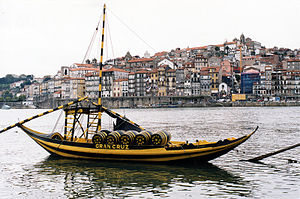
Back Weinbau in Portugal German Anexo:Vinos de Portugal Spanish Viticulture au Portugal French Portugália borászata Hungarian Viticoltura in Portogallo Italian ポルトガルワイン Japanese პორტუგალიური ღვინო Georgian 포르투갈 포도주 Korean Wijnbouw in Portugal Dutch Portugisisk vin NB
This article needs additional citations for verification. (October 2017) |

Portuguese wine was mostly introduced by the Romans and other ancient Mediterranean peoples who traded with local coastal populations, mainly in the South. In pre-Roman Gallaecia-Lusitania times, the native peoples only drank beer and were unfamiliar with wine production. Portugal started to export its wines to Rome during the Roman Empire. Modern exports developed with trade to England after the Methuen Treaty in 1703. From this commerce a wide variety of wines started to be grown in Portugal. In 1758, one of the first wine-producing regions of the world, the Região Demarcada do Douro was created under the orientation of Marquis of Pombal, in the Douro Valley. Portugal has two wine-producing regions protected by UNESCO as World Heritage: the Douro Valley Wine Region (Douro Vinhateiro) and Pico Island Wine Region (Ilha do Pico Vinhateira). Portugal has a big variety of local kinds, producing a very wide variety of different wines with distinctive personality.[citation needed]